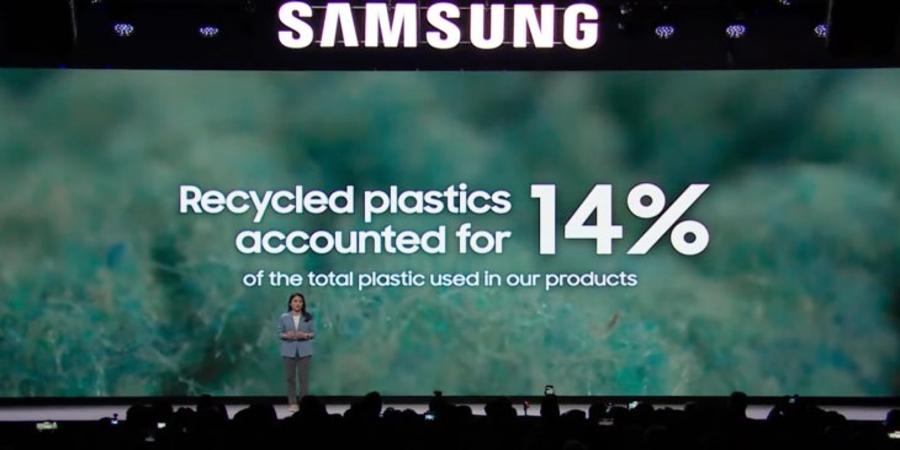We’ve heard “reduce, reuse, recycle” used ad nauseam, but at CES 2024 in Las Vegas, Samsung follows in Apple’s footsteps, doubling down on that, dedicating a significant amount of its keynote speech to underscoring its commitment to sustainability. The company is specifically expanding its efforts toward resource circularity, from the design of its devices to how they’re used and, ultimately, how they’re reused or recycled. The company has embraced recycled materials in some of its most popular products.
“We start by incorporating recycled materials into some of our most loved products, such as recycled fishing nets in our Galaxy,” said Inhee Chung, VP of corporate sustainability at Samsung. “Smartphones, recycled plastic in our TVs and recycled aluminum in our bespoke refrigerators. Recycled plastic accounted for 14% of the total plastic used in our products in 2022. And we’re working towards increasing this amount.”
Beyond the manufacturing process, Samsung is also considering the environmental impact of their products during use. Innovative features like SmartThings AI Energy Mode can help consumers manage energy at home by using connected intelligence. According to Samsung’s data, the number of SmartThings energy users worldwide has increased by more than 75% in 2023 (although the company didn’t specify the base number for that, so who knows if that’s as impressive as it sounds.)
Samsung has also announced the integration of SmartThings energy with Tesla’s Powerwall solar inverter and Wall Connector EV charging solutions. This collaboration means that SmartThings energy can enable Tesla Powerwall Storm Watch to notify users before a severe weather event and help prepare for power outages by activating energy-saving automation.
Perhaps the most interesting initiative shown off at the press conference today was the company’s commitment to sustainability beyond end-of-life use. The company prioritizes reuse and recycling, offering refurbished phones through programs like 35 Renewed, and the Galaxy Upcycling initiative, which helps users reuse or repurpose old phones. One way that shows up is that the company has partnered with the D-Lab at MIT to develop new ways to upcycle Samsung devices and divert them from becoming electronic waste. The collaboration aims to create a transformative impact in low-income communities in Africa, where the impact of e-waste is most acutely felt.
Today’s press conference gave me some hope that Samsung’s commitment to a low-carbon circular economy goes beyond lip service. From the design of their products to their end-of-life, Samsung is proving that tech companies can embrace sustainability and environmental responsibility. The tech giant is not only innovating in its product line but also in its environmental footprint, making strides toward a greener and more sustainable future.
Could they be doing more? Likely, yes — but the metrics and milestones outlined today do seem to go beyond the run-of-the-mill greenwashing the cynical among us have grown to expect from corporations all over the world; the initiatives are real and cost real money and take effort to put into action.
More of that, please.
Source @TechCrunch



